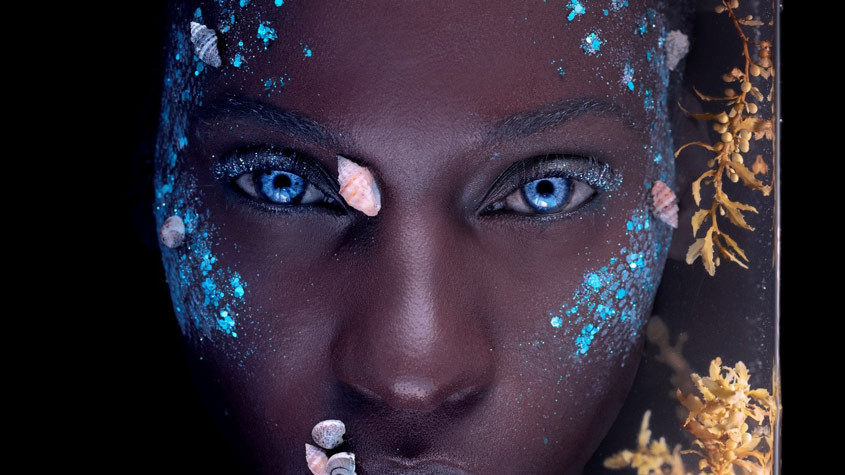
The Intersection of Intellectual Property, Branding and Diversity in Modern Advertising
By Shalisha Samuel, Voice Over Actor and Attorney, Port of Spain, Trinidad and Tobago
What do Apple’s “Inclusion and Diversity – Open”, Dove’s “Real Beauty” RBC’s “That Little Voice”, Procter & Gamble’s “The Talk” and Heineken’s “Open your World” campaigns have in common?
These campaigns embrace diverse groups of people and perspectives and highlight commonly overlooked social issues. Their strategic conceptualization and production disrupt the advertising “script,” allowing the brands to distinguish themselves through their memorable messaging.

Tapping the economic potential of diversity
Diversity in advertising has the potential to enhance a brand’s standing, strengthen the value of its trademark and generate revenue. WPP’s 2022 Consumer Equality Equation (CEE) report emphasizes the importance of being more inclusive from product development through marketing and advertising to address consumer inequality, and the economic returns that can follow from that. It notes that, “…by 2023, the disposable income of people from Minority Ethnic Groups is projected to be GBP 252 billion per annum. Their cumulative disposable income is projected to reach GBP 3.06 trillion by 2031, increasing to GBP 16.7 trillion by 2061…).”
Defining diversity and its dynamics
But what exactly is diversity and what does this have to do with the value of a company’s intellectual property (IP)?
Diversity refers to the range of people and perspectives within society. It includes demographic, experiential and cognitive diversity each with sub-categories, such as ethnicity, race, gender, cognitive style, education, religion, age, experience or nationality.
The dynamics of diversity are such that each one of us can easily form part of more than one group. Diversity is important because it creates the space for new perspectives and ideas, serving as a catalyst for innovation and creativity that serves the needs and interests of everyone.
Diversity is important because it creates the space for new perspectives and ideas, serving as a catalyst for innovation and creativity that serves the needs and interests of everyone.
IP, branding and diversity: the business case
Along with diversity, IP rights are also a catalyst for innovation and creativity. When we talk about IP, we are referring to a company’s intangible (non-physical) assets, and in this context, its brand. A company’s brand is typically legally protected by a trademark, which can be enforced in a court of law. On registering a trademark, a company enjoys a number of rights, including the exclusive use of the brand for a certain number of years with the option for renewal.
In today’s economy where costs of production are decreasing, intangible assets reign supreme, with consumers increasingly relying on brands to make purchasing decisions. The significance of intangible assets in a company’s portfolio, as well as in the global economy, which is becoming increasingly knowledge-based, is now widely acknowledged. For example, Ocean Tomo’s 2020 Intangible Asset Market Value Survey shows that intangible assets represent 90 percent of S&P market value.
Establishing a strong trademark or brand identity enables a business to distinguish itself from competitors, attract and retain loyal customers and ultimately thrive in a fiercely competitive market. But where does diversity come into the equation when promoting a brand?

Advertising is an indispensable way for brands to attract customers and expand their consumer base. In response to consumer demand, and in the interests of business growth, many brands are now paying greater attention to diversity, equity and inclusion (DEI), and are showcasing these important issues in their advertising campaigns. Increasingly, brand owners view such campaigns as powerful vehicles to reach and win new customers and to stand out from competitors.
However, despite growing recognition of the business case for diversity, equity and inclusion, around “84 percent of diversity goes unnoticed,” Tasha Dean, Chief Revenue Officer at the Martin Agency tells WIPO Magazine, suggesting that a great deal still needs to be done to capture consumer attention on these issues.
The data show that diversity is a winner for business. It enables brands to present fresh perspectives that resonate with diverse audiences and inspire meaningful connections. Customers are more likely to engage with brands that resonate with them and in which they see themselves. More than three-quarters of the respondents in the CEE report (mentioned above) state that it’s important for them that brands promote diversity and inclusion.
Diversity is a winner for business. It enables brands to present fresh perspectives that resonate with diverse audiences and inspire meaningful connections.
Adobe’s global study (2019) of over 2000 consumers notes that, “Most Americans (61%) find diversity in advertising important […] 38% of consumers said they are more likely to trust brands that show more diversity in their ads.” WPP also notes that in 2022, consumer trust was higher for brands that represent ethnic minorities in their advertising with “79% versus 60% for white respondents.”
Such a competitive edge can increase the value of a trademark, enabling brand owners to leverage their IP as collateral to secure the financing needed to expand operations and invest in new products. Moreover, the value of a company’s IP can also attract partners and provide opportunities for licensing and franchising.
An opportunity for brands to demonstrate their commitment to DEI
Although evidence suggests that diverse representation in advertising campaigns can boost stock value and investor confidence, some question whether it is a genuine effort to create a more inclusive world or simply a fleeting trend. Are companies simply riding the bandwagon until the next best thing comes along or are they truly committed to diversity, equity and inclusion?
And what about the faces and voices featured in these commercials – how do they and the groups they represent benefit in the long run?
Perspectives on DEI from within the advertising industry
A number of key players in the advertising industry share their views on the matter with WIPO Magazine.
Matt Foster, Director of Diversity, Equity and Inclusion (DEI) at Ogilvy UK, says: “this question goes to the heart of what excellence in DEI is all about: true integration. In the past, we weren’t seeing diversity of representation in ads because there was no diversity in the companies of the advertisers or the agencies that were creating the ads, not to mention the casting agents or the production teams. The idea that DEI is something that should only be focused in narrow areas is reductive and will only limit progress.”
Brands, agencies and the advertising industry at large shouldn't focus on DEI because it's the right thing to do—they should focus on it because it is the only thing to do.
Bianca Guimaraes, Partner and Executive Creative Director at Mischief @ No Fixed Address
Bianca Guimaraes, Partner, and Executive Creative Director at Mischief @ No Fixed Address believes that "Brands, agencies and the advertising industry at large shouldn't focus on DEI because it's the right thing to do—they should focus on it because it is the only thing to do.” She adds “the world we live in is diverse. Diversity must be reflected in how a company communicates with this world. It's as simple as that.”
These views suggest that DEI is an essential part of the eco-system that supports the creation of commercials. Foster goes on to say that Ogilvy UK’s model of DEI focuses on the company’s policies, systems, and processes for employees. He notes that it supports cross-cultural exchange in the community and integrates DEI “from ideation through to going to the market (and includes the whole supply chain).”
The need for DEI in commercials, is also highlighted by Rainbow Kirby in her article, “6 Ways the Advertising Industry Can be Inclusive in 2022.” Kirby maintains that showcasing diversity in ad campaigns is not enough; the production process - script, set design, choice of music and clothing worn - must also reflect inclusivity. She emphasizes that all players, including board members, have an impact on the production process.
DEI-focused advertising: An opportunity for brands to empower minority groups
Empowering marginalized groups might involve brands entering into IP licensing agreements with them. The US media activist and social justice writer Ebonye Gussine Wilkins, for example, helps corporations and others to create and revise content to make it reflect the communities they serve. She offers a different perspective on diversity in advertising and tells WIPO Magazine that investment in the companies owned by underrepresented groups is an opportunity for brands both to feature these groups in commercials and for brands to demonstrate their authenticity around DEI by investing in the companies led by individuals from minority groups.
Wilkins notes that licensing stock images from companies owned by underrepresented groups, which best represent the experiences and narratives of their communities, offers brands an opportunity to engage authentically with consumers. A photo of a family at dinner with a display of food that includes jollof rice, breadfruit or ugali creates a genuine connection with consumers from Ghana, Nigeria, the Caribbean, or Kenya, for example. This approach also offers these companies an opportunity to build their businesses and to underpin them with an authentic commitment to diversity by commercializing the IP of companies led by individuals from minority groups.
The imperative for brands to create a meaningful connection with consumers is why Barbadian entrepreneurs Christina Hunte and Kevin Headley are creating a database of Caribbean stock photography.
Diversity in advertising can also hinge on diversity in the product line or service offered.
Diversity in advertising can also hinge on diversity in the product line or service offered. The wide range of skin tones of the models in commercials for Fenty Beauty Foundation is a result of the brand’s inclusive range of 50 shades of foundation. TIME’s Magazine named Fenty Beauty as one of the best inventions of the year for its inclusive product line. The size options of lingerie from the Savage X Fenty brand, and others, have sparked new trends and style for people of all shapes and sizes who we now see on fashion runways.
Creative agencies are now recognizing that diversity in advertising needs to be rooted in the company culture and is not limited to the production process.
Creative agencies are now recognizing that diversity in advertising needs to be rooted in the company culture and is not limited to the production process. Wilkins says that diversity has to be the philosophy of the company, otherwise efforts to display diversity in commercials ring hollow and may damage brand image.

It is no surprise then, that when assessing the suitability of an advertising agency to represent their products, brands are now requesting DEI reports from the agencies. Foster remarks that “Clients are posing many far-ranging questions, from wanting to understand the gender or ethnic makeup of specific account teams, to what suppliers we work with and whether they are minority-owned businesses. It’s become part of how we are assessed by clients and their procurement teams, which is how it should be.”
Guimaraes of Mischief @ No Fixed Address believes that “the people behind the marketing must reflect the audience they're talking to ensure that any message is authentic. There is no benefit in having a brand or agency team that thinks, talks, and looks the same and shares the same life experiences.”
Diversity in the teams that market and advertise brands […] ensures they reflect the client’s diversity values.
The core message then is that diversity in the teams that market and advertise brands shapes the resulting advertising campaigns and ensures they reflect the client’s diversity values.
The composition of teams at advertising agencies is shifting, according to the 2022 Institute of Practitioners in Advertising (IPA) Census. Now in its 63rd year, the census found a 12 percent increase in women occupying C-suite positions and a 58 percent increase in employees from a non-white background. Commenting on the increasing diversity in advertising agencies, Paul Bainfair, Director General of IPA says, “…our collective concerted efforts to improve diversity and inclusion within our industry are beginning to pay off.”
The call for diversity is not limited to brands, it also includes creatives.
The call for diversity is not limited to brands, it also includes creatives like photographer Flor Blake, who photographed former First Lady Michelle Obama. Blake recalls a project she walked away from where the client refused to make changes to the casting. “When I am in the production room, I bring it up [diversity and inclusion] …all campaigns I work on have to pass through the filter of DEI,” she explains.
As intangible assets continue to dominate the market, brands that fail to recognize the value of diversity in their advertising campaigns risk missing out on opportunities to consolidate their market position. By including different people and perspectives in their advertising, companies can strengthen brand identity and yield what Foster calls a “diversity dividend” where everyone wins.
Diversity and inclusion in advertising are now part of the landscape of modern advertising and, according to Foster “… is definitely here to stay”, though the change is not fast enough for consumers who “…are looking for a leap”. The experts caution against superficially draping commercials in DEI friendly robes, simply to boost sales. Building a brand that embraces diversity requires an ethical approach based on authenticity to strengthen the IP value of businesses and strengthen communities.
The WIPO Magazine is intended to help broaden public understanding of intellectual property and of WIPO’s work, and is not an official document of WIPO. The designations employed and the presentation of material throughout this publication do not imply the expression of any opinion whatsoever on the part of WIPO concerning the legal status of any country, territory or area or of its authorities, or concerning the delimitation of its frontiers or boundaries. This publication is not intended to reflect the views of the Member States or the WIPO Secretariat. The mention of specific companies or products of manufacturers does not imply that they are endorsed or recommended by WIPO in preference to others of a similar nature that are not mentioned.